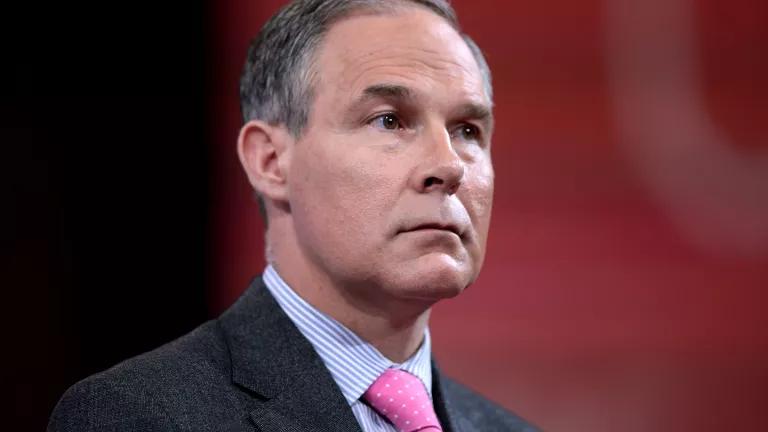
UPDATE: On December 23, 2020, the U.S. Environmental Protection Agency officially finalized its do-nothing rule on ozone pollution—keeping an unsafe standard for smog and foregoing the opportunity to better protect the public, reduce asthma attacks, and save thousands of lives with a stronger standard.
U.S. Environmental Protection Agency chief Scott Pruitt has a habit of putting off regulations that protect Americans from breathing polluted air. This time he has pushed back the deadline for a more protective health standard against smog pollution for at least another year. Pruitt notified governors in a letter, claiming that “there is insufficient information” to act at this time. Ground-level ozone, the main ingredient in smog, triggers asthma attacks and other health problems, and is particularly a problem in the summer. The EPA’s rule requires states to keep ozone under 70 parts per billion—down from the previous standard of 75 ppb, which EPA science advisors have unanimously deemed unsafe. Beginning this October, the agency was supposed to be notifying Americans living in unsafe air areas and requiring states to take steps to lower their ozone pollution. In addition to the delay, Pruitt has directed the EPA to undertake a series of actions that are widely seen as an effort to repeal or weaken the current smog standard. So, while polluting industries cheer the Trump administration’s giveaways, Americans are left wheezing (or worse).
Related Content

EPA Must Follow Science & the Law to Cut Harmful Ozone Smog

Air Pollution: Everything You Need to Know

